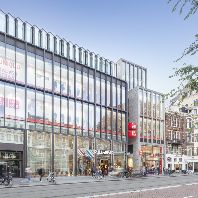Oakland East Bay, Stockholm, Dublin and Dubai (DIFC) took the top spots for annual office rental growth, according to JLL’s latest Global Office Index. All four cities saw growth of 20 percent or more, with Oakland East Bay reaching 35.4 percent and topping the ranking. Cairo came in at sixth place with growth of 16.7 percent, whilst Asia Pacific was represented by Sydney in fifth place with 17.1 percent growth and Hong Kong in at tenth position with 11.1 percent. Apart from Oakland East Bay, three other U.S. cities were featured in the top ten: Los Angeles (seventh), Atlanta (eighth) and Austin (ninth) showing 13.5 percent, 13 percent and 12.1 percent growth respectively.
Rents on prime office assets across the 110 major markets covered by the JLL Global Office Index increased by 3.6 percent year on year in Q2 2016, the fastest pace of annual growth in four years. Rents rose by 0.8 percent in Q2 2016 compared to 0.6 percent in the previous quarter.
Jeremy Kelly, Director, Global Research Programs at JLL, said: “Global office demand is proving resilient in many of the world’s dominant commercial real estate markets, despite increased political and economic uncertainty that is leading to corporate occupiers striking a more cautious tone. Office supply continues to tighten on the back of a shallow development cycle, and this is creating continued upward momentum in aggregate rental growth.”
The Americas Office Index accelerated in Q2 2016 with prime office rents in the region rising by 0.6 percent quarter-on-quarter, up from 0.2 percent in Q1. This remains a slower pace of growth than that experienced in the second half of 2015, with growth in some of the previously fastest-surging markets, such as San Francisco and Silicon Valley, decelerating from unsustainable levels seen earlier in the cycle. Nonetheless, the cyclical expansion in the U.S. remains firmly in place as landlords in the vast majority of cities enjoy market leverage over tenants, and this is expected to continue to be the case into 2017. The Americas Office Index has now gained 20.1 percent since the cyclical trough in early 2010 and the new record level as of Q2 2016 is 3.6 percent higher than the previous cycle’s peak in 2008.
Asia Pacific quarterly rental growth was recorded at 0.6 percent (2.7 percent year-on-year) in Q2 2016, consistent with the 0.6 percent (3.1 percent year-on-year) witnessed in Q1. Technology and finance continued to drive regional demand, while offshoring and outsourcing together with ITES bolstered demand selectively in India and parts of Southeast Asia. A large upcoming supply volume contributed to an only marginal quarterly uplift in Tokyo (+0.4 percent) despite strong leasing and very low vacancy. Vacancy pressure and cost-saving strategies saw Shanghai’s rental growth moderate to 0.9 percent. Growth in Hong Kong (+2.3 percent quarter-on-quarter) was propped up by demand from mainland Chinese banks. Conditions in Australia remain mixed, with traditional occupier groups such as finance and professional services contributing to rental growth in Sydney (+17.1 percent year-on-year) and Melbourne (+1.9 percent). At the same time, a slumping resources sector and high vacancy once more put downward pressure on rents in Brisbane (-3.5 percent) and Perth (-20.1 percent).
Q2 2016 office leasing volumes in Europe were down 3 percent year-on-year, although at 2.9 million m², it was well ahead of the 10-year average. Excluding the UK, European take-up grew by 4 percent year-on-year in Q2, a clear sign of the upbeat sentiment on the continent. While leasing activity in London has clearly been affected in the run-up to and following the EU referendum, general sentiment elsewhere in European leasing markets is one of ‘business as usual’ with levels of activity similar to recent quarters. The European Office Index rose by 1.5 percent quarter-on-quarter in Q2, the strongest increase in five years, bringing aggregate annual growth to 4.3 percent. Of the 39 Index markets, 10 have registered quarterly rental increases (up from 9 in Q1), while only Zurich (-1.3 percent) and Istanbul (-4.4 percent) have seen a decrease.
Looking ahead, Jeremy Kelly commented: “Economic uncertainty and continued political risks are likely to dampen leasing volume growth over the remainder of the year, with global leasing volumes in 2016 projected to be around 5 percent lower than 2015. Nonetheless, underlying market fundamentals are sound and corporate demand is holding up well, notably in the U.S. and continental Europe. Supply constraints will continue to drive rental increases, although at a reduced pace, and JLL forecasts prime rental growth of around 2-3 percent for the full year 2016.”















